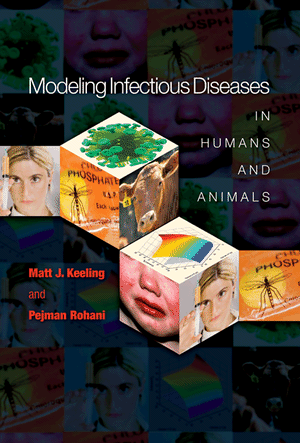The simplest form of a pair-based
approximation model is used to capture disease spread through a network
of contacts (see Section 7.6 of this chapter). In its most basic form,
this pair-wise model assumes an equal number of contacts per individual
and no clustering; this approximation therefore corresponds most
closely to the random network, although adaptations that capture
clustering or heterogeneities are possible.
The method operates by modelling the number of susceptible-infected
pairs in the network as well as simply the number of individuals. In
principle to calculate the behaviour of pairs we need to know about
triples:
where the arrows indicate the
direction of transmission. However, by making a suitable approximation,
we can formulate a set of equations that capture the spatial
correlations due to network structure and yet only contain one extra
state variable:


